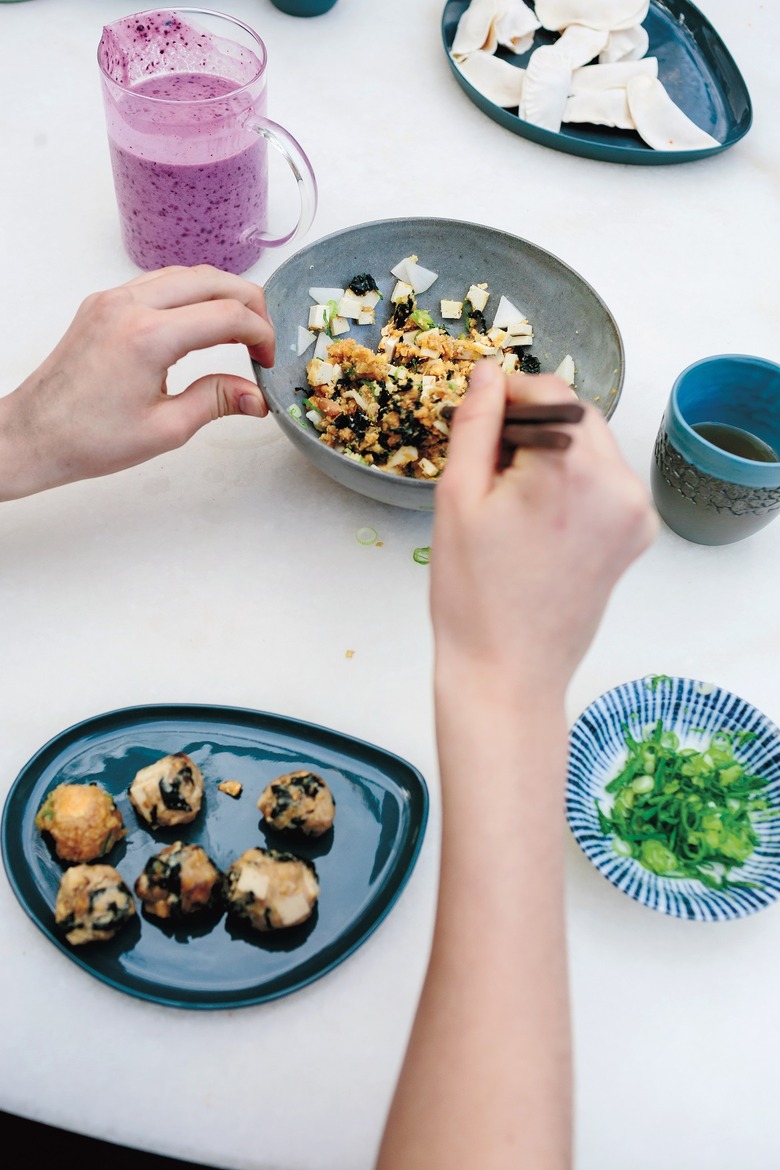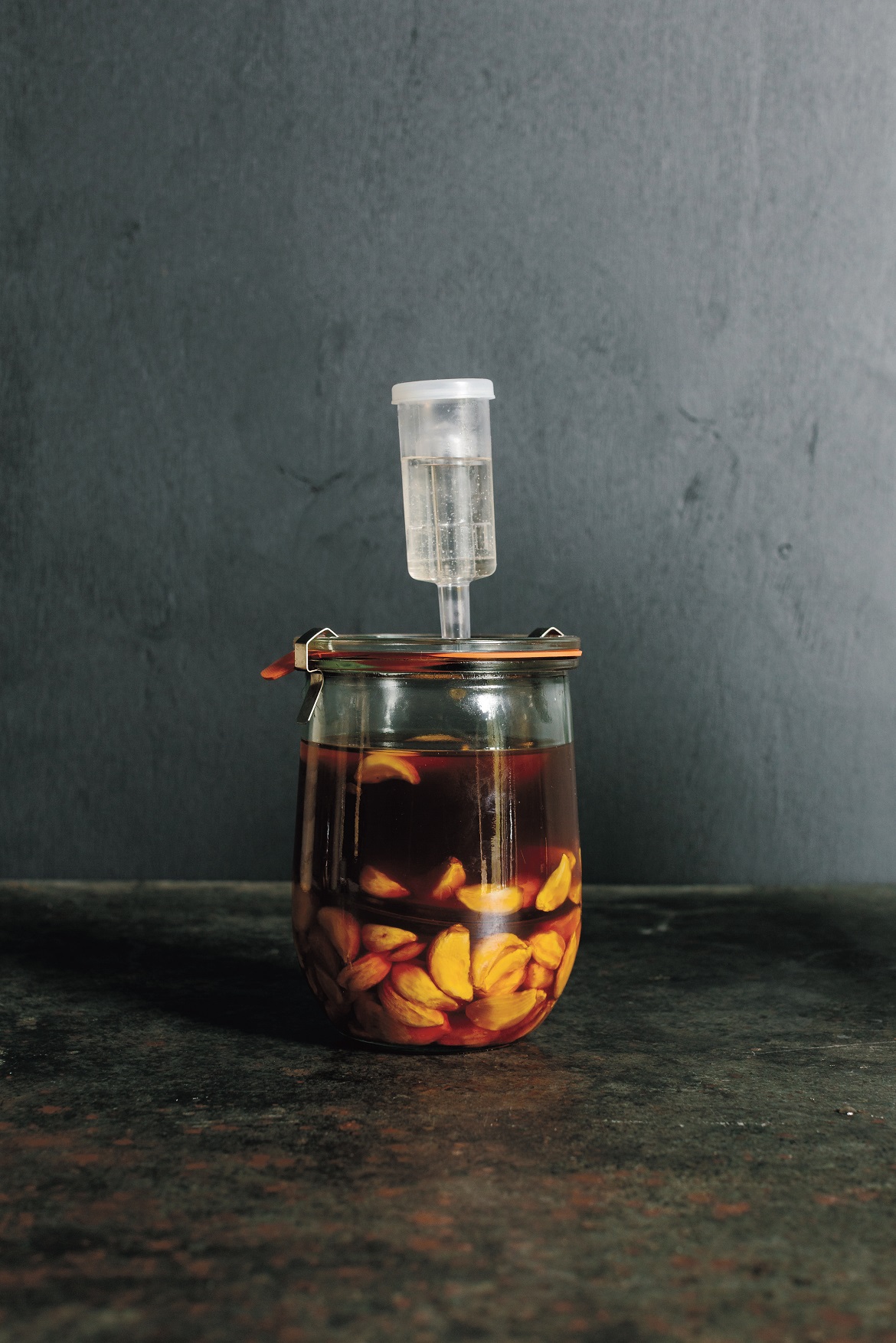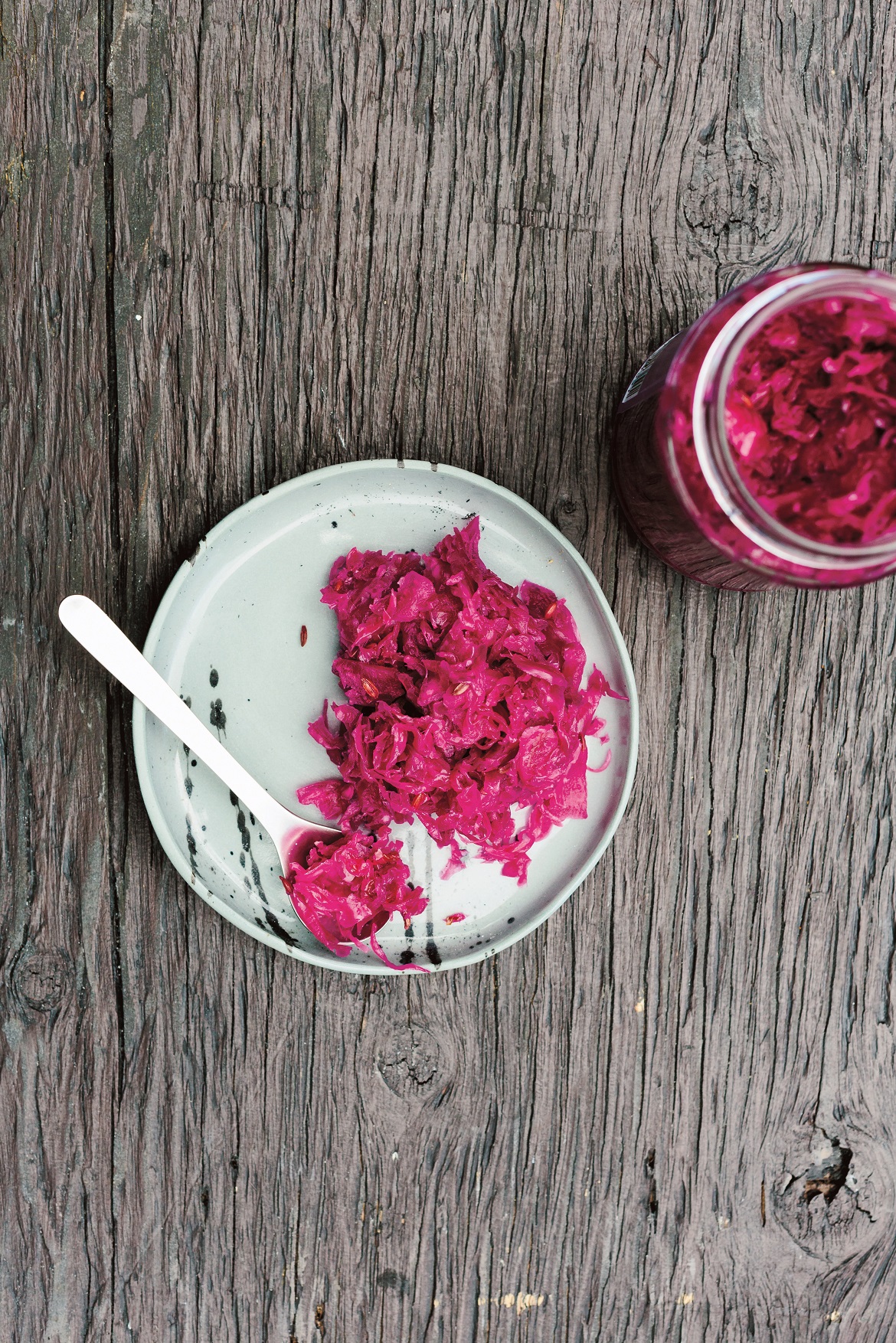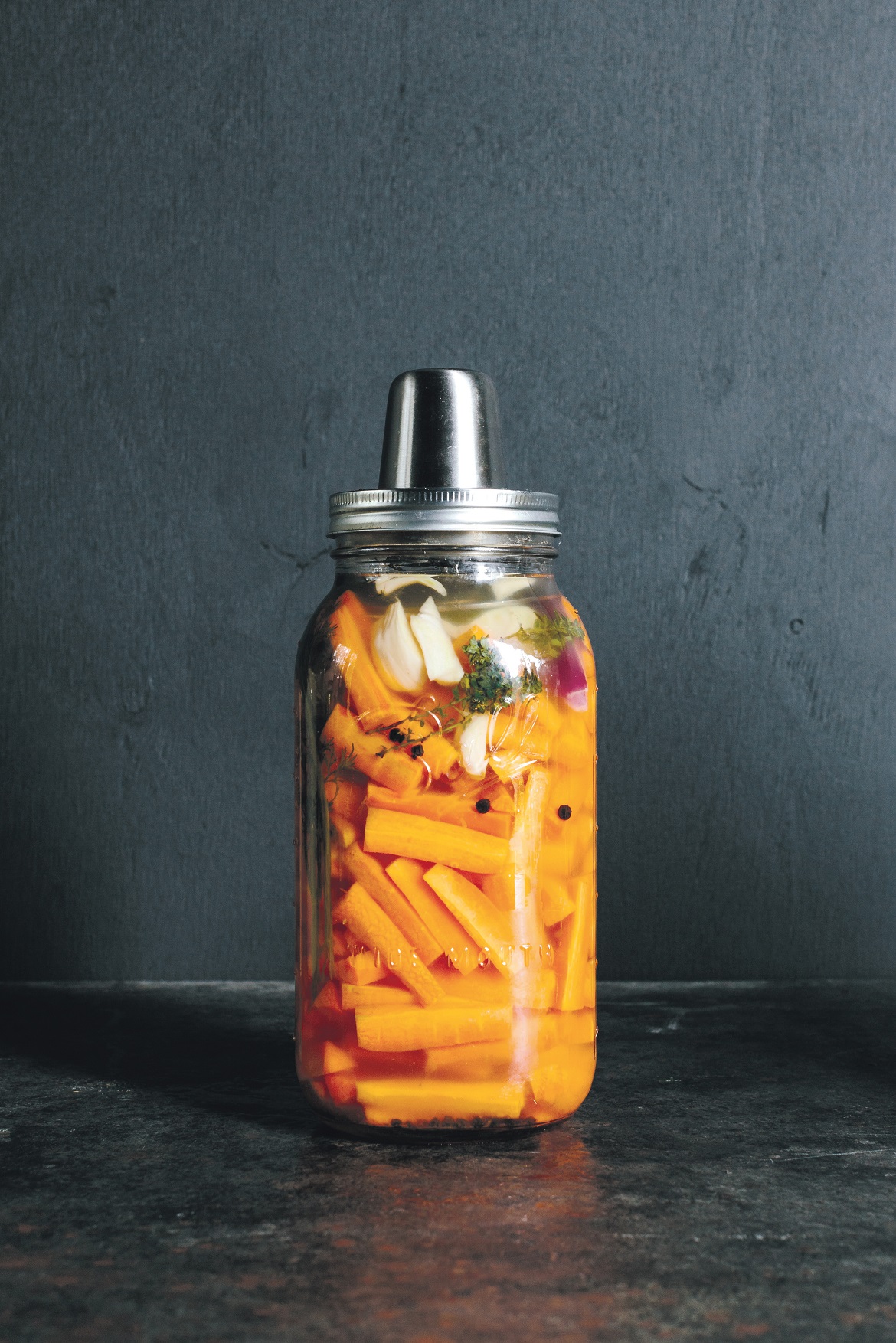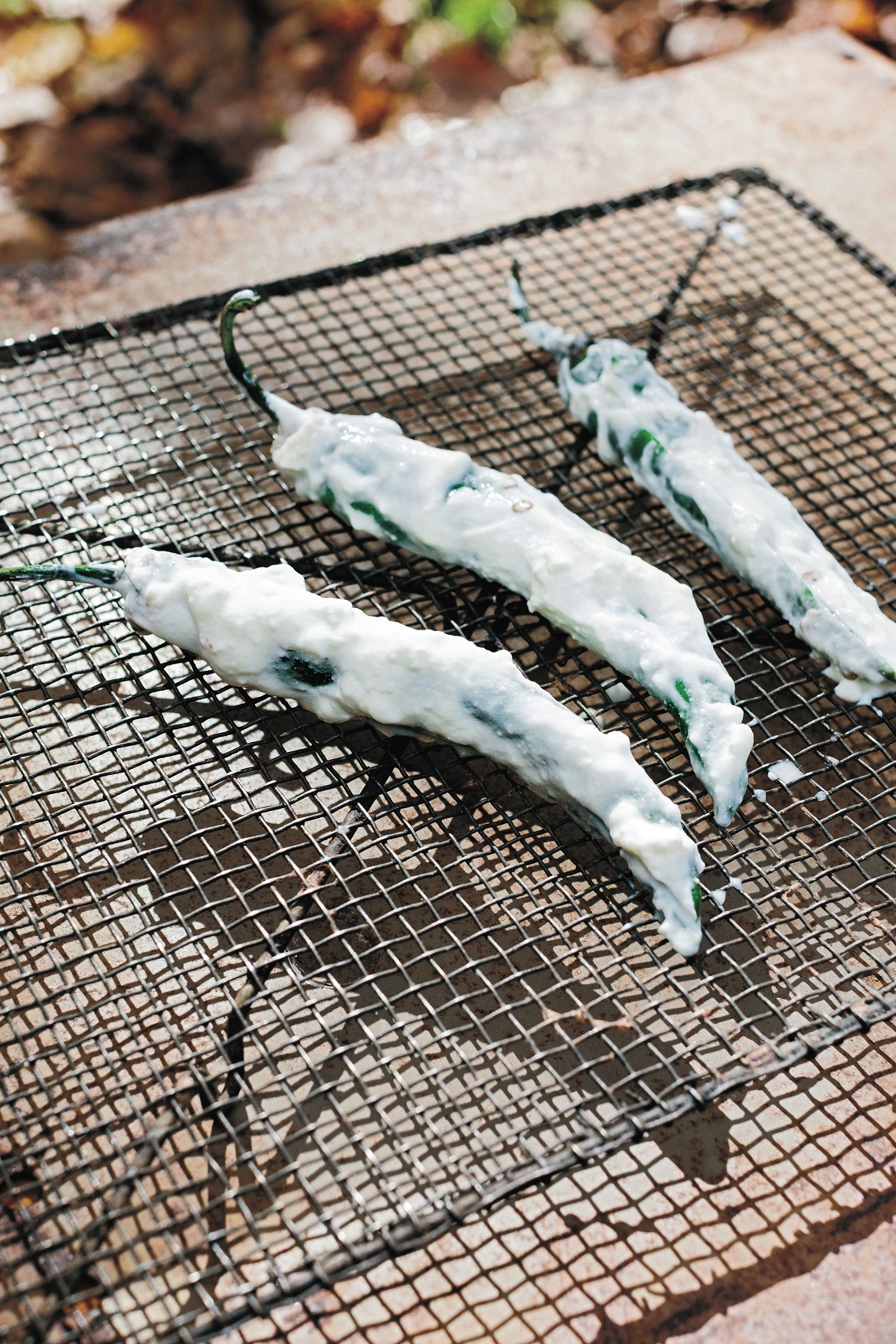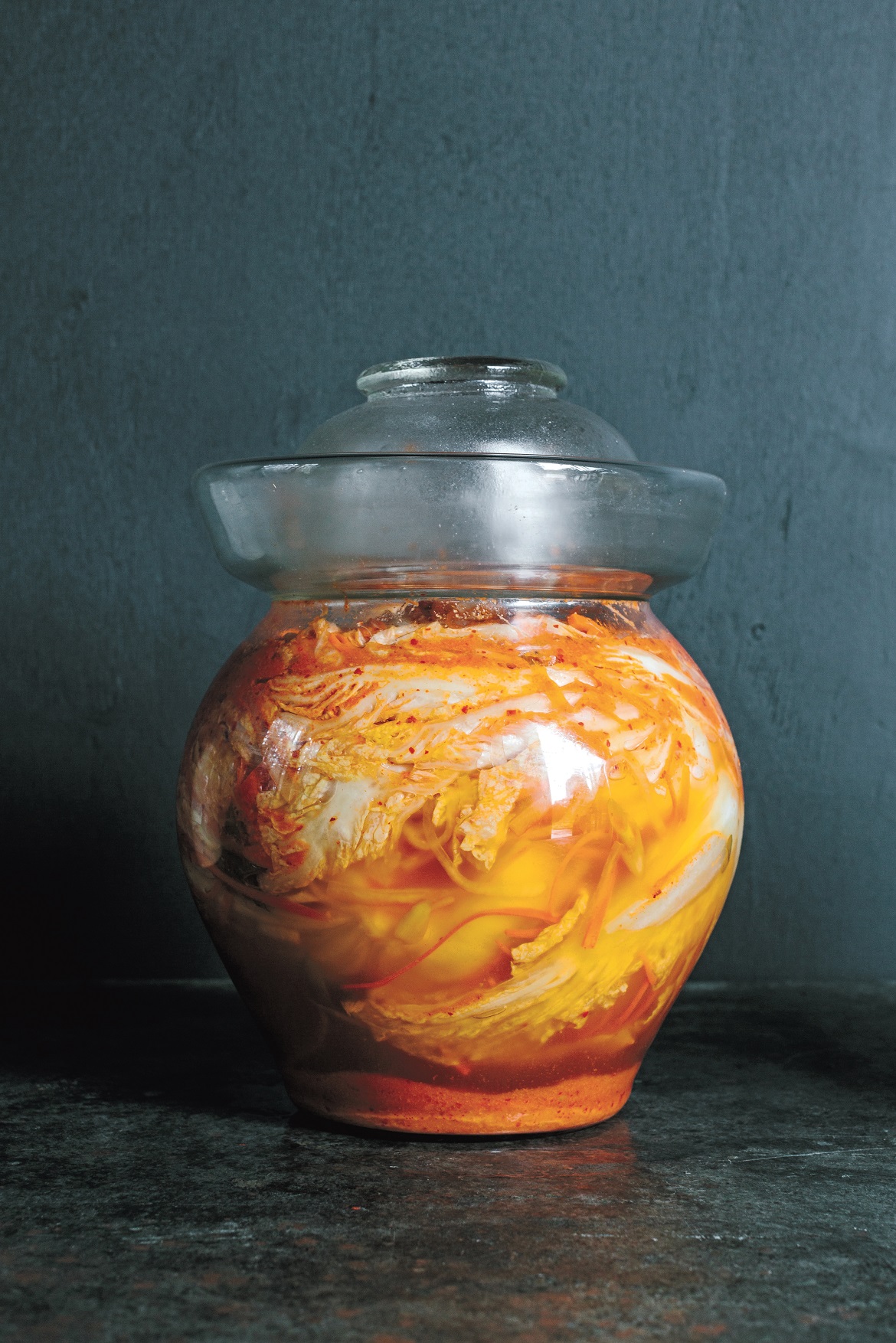Ferment For Good: Ancient Foods For The Modern Gut
"Fermented food may be the slowest and oldest fast food. The main ingredients in fermenting are your desire to play and time to wait."
Australian-born Sharon Flynn, author of Ferment for Good, moved in her twenties to Tokyo, where she lived for the next decade, learning fermentation techniques and recipes from those around her. Before moving to Japan, where she learned all about miso, nattō, and sake leeks, Flynn had been gradually discovering food throughout her life and travels — pickles in Chicago, street food in Kuala Lumpur, open sandwiches in Denmark — but it was in Brussels that she first began considering the full effects of living foods.
When her 5-year-old daughter became sick for a prolonged time, Flynn sought out remedies for healing a little gut that had been exposed to so many antibiotics and inevitably damaged in the process. When a friend told Flynn that fermented foods like yogurt, kefir, and sauerkraut might help repopulate healthy gut flora, she set about getting as many of these "living foods" into her daughter's body as she could to heal and replenish her immune system. "I had been flirting with this kind of food preservation since my early twenties, but it wasn't until then that it occurred to me that, while my many fads seemed so different, they all came under the banner of fermentation."
From that moment, Flynn made it her life's work to learn and share all there is to know about the ancient practice of fermentation.
Her new book Ferment for Good is a gorgeous manual that provides readers with everything they need to know to begin cultivating wonderful fermentations at home. Readers are taken through all the steps, with a how-to guide that covers all the basics of fermenting at home, what fermenting is, why it is good for us, and what equipment is needed to begin. The book is full of lovely photographs and Japanese-inspired illustrations that show the processes and results of fermentation.
Flynn, whose business began by selling fermented elixirs out of her car trunk to friends and mums at school, now runs her own fermenting business in Melbourne called The Fermentary.
Recipes featured in the book include:
— Whole Kimchi (Tongbaechu Kimchi)
To purchase Ferment for Good, click here.
The Daily Meal: What is your philosophy of cooking (and/or eating)?
Sharon Flynn: What we eat has a lasting impact not just on our bodies or mood, but on the producers, farmers, environment, and economy. Our buying reflects that power — we buy certain imported foods we love, and eat small amounts of luxurious foods (like imported tinned fish) but most of our food is first local, and then seasonal. Never fad foods nor "super" foods. Just real and delicious foods made as much from scratch as possible.
How did it inspire the recipes you chose to include in this book?
I really love variety — and that's where preservation and fermentation can bring the seasonal and local foods into your life all year, and add an element that other raw vegetables just can't. The enormous health and flavor benefits you get from fermented foods, and the fact that you are making something from scratch comes from that too.
What is your favorite recipe in the book and why?
I'm very proud of our kimchi recipe, but I get really excited when people tell me they've made the miso dama balls — it makes having a bowl of miso very easy and more likely. The soups are great too, though. I really love the soups — it's winter here now, that could be why.
What are some of the foods you can't live without?
Mirin. Pour it on everything that needs a bit of umami or sweetness. Also, of course, potatoes, butter, wine, cheese, pasta. Good sourdough bread. Sesame seeds show up a lot in things I make. And a good crisp apple.
Would you rather dine out or cook at home?
My partner is a chef, but I'd still rather go out because I'm curious and appreciative about what people are making, and how they are presenting it. And I'm a social animal and love getting out of The Fermentary and meeting customers and other friends in food. Having said that — some of the bowls of pasta Roger makes us when we are home alone are greasy-lipped, memorable bowls of love. Can't beat that.
What is your favorite go-to meal or drink?
Milk kefir is great in the morning and easy to grab with a few nuts and seeds and a splash of maple syrup. A simple bowl of pasta with chili oil and parsley and parmesan, or kimchi on rice with sesame dressing or tahini is pretty fabulous.
How do you hope readers will use this book, what do you hope they take away?
I hope they go straight to the ferment they've been wanting to make for a while, then have their curiosity sparked by perhaps the mead, and maybe they won't be able to stop thinking about it and then have to make it. I'd like to think they'd take the book to the couch to read it. Perhaps further on, a vegetable they come across will draw them back to the book for more fun.
Is there anything else you'd like to share?
I adore a long late lunch and am always hoping for a kind of "sobremesa" — really important times with all of the kids in the house and our busy lives. One thing: I love food and everything about it — and so don't suffer picky eaters well. A healthy amount of curiosity is everything to me.
